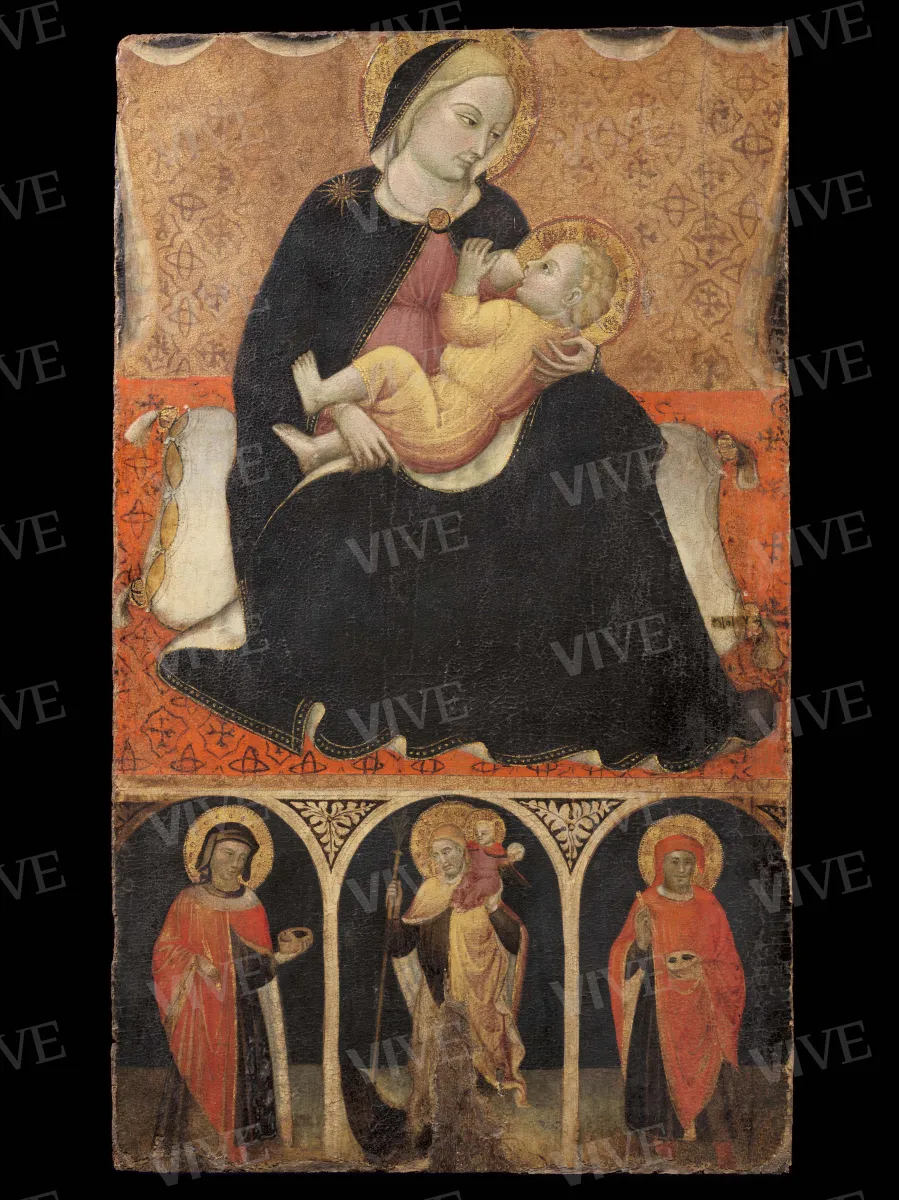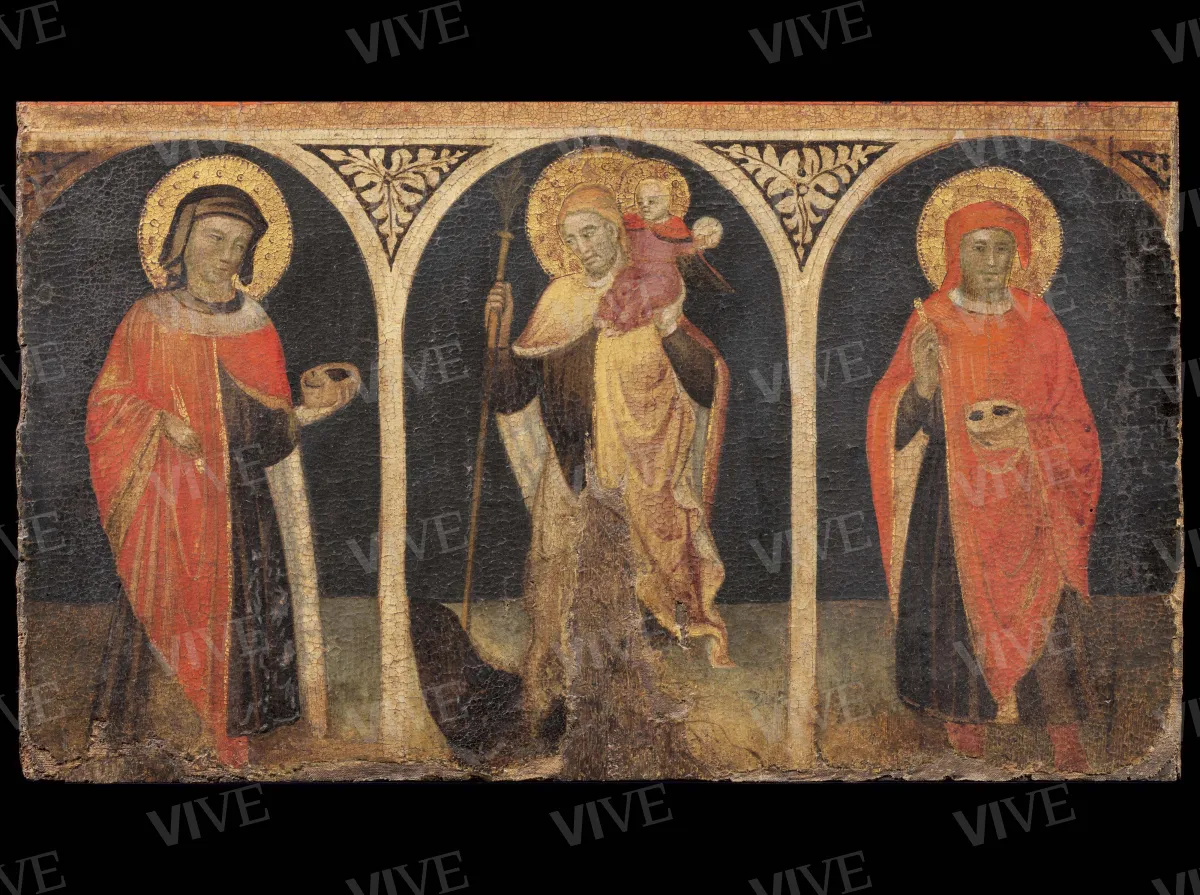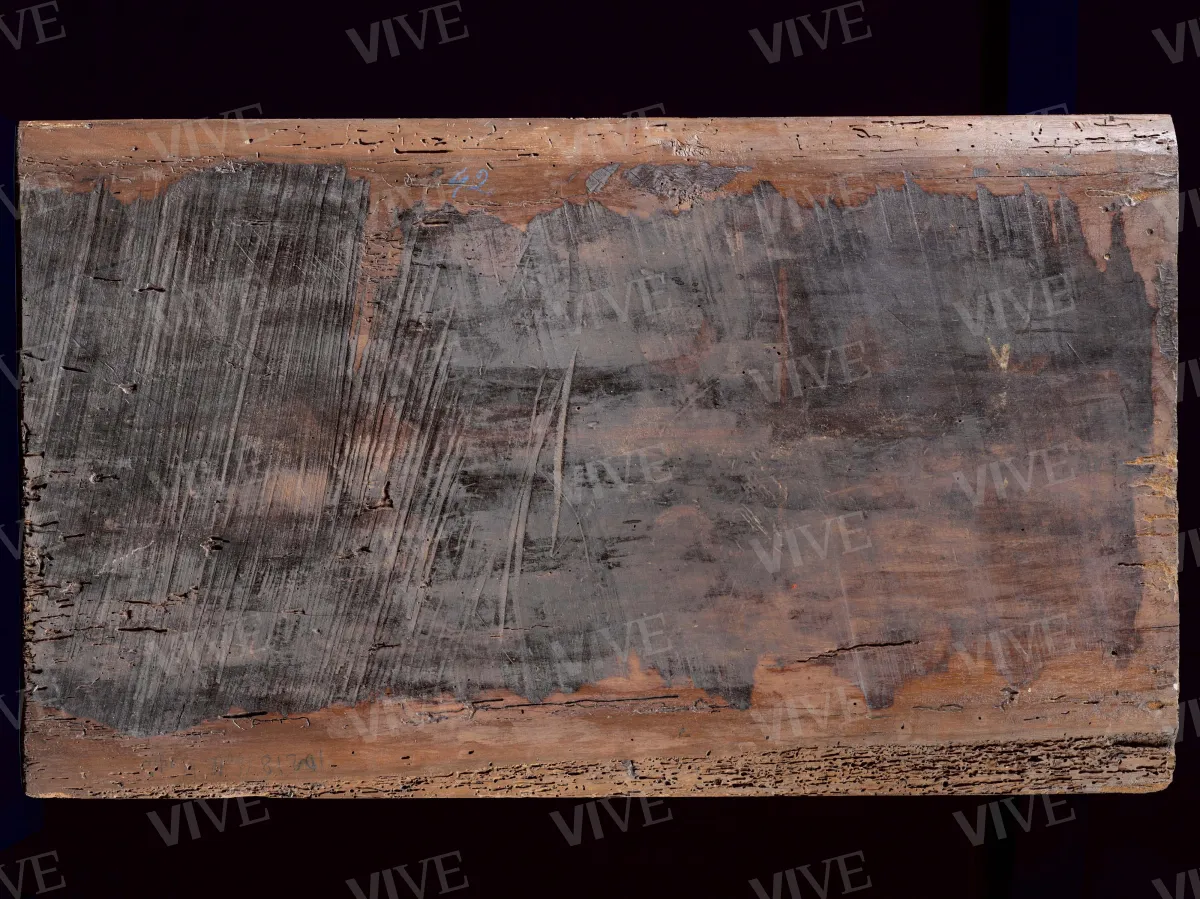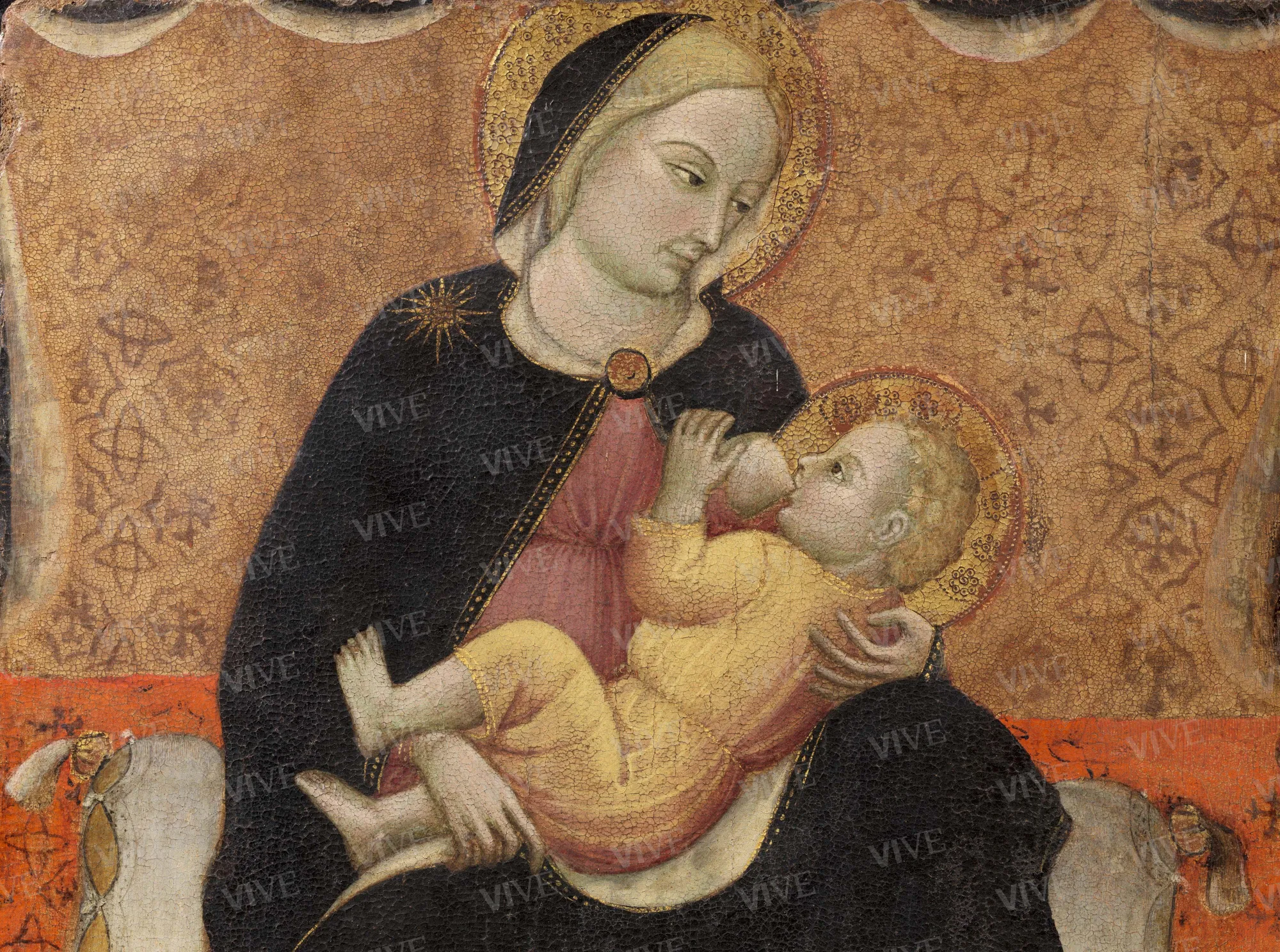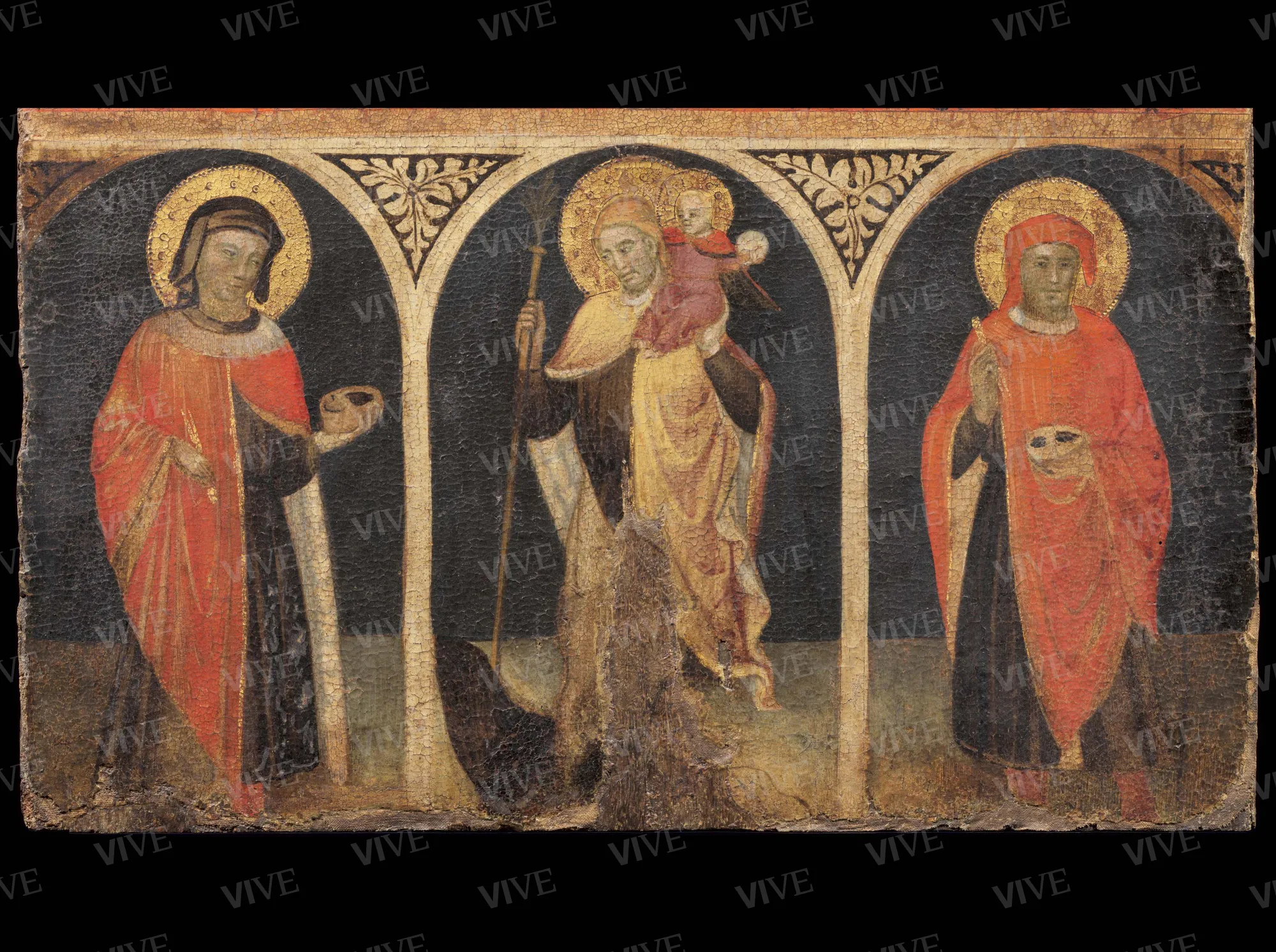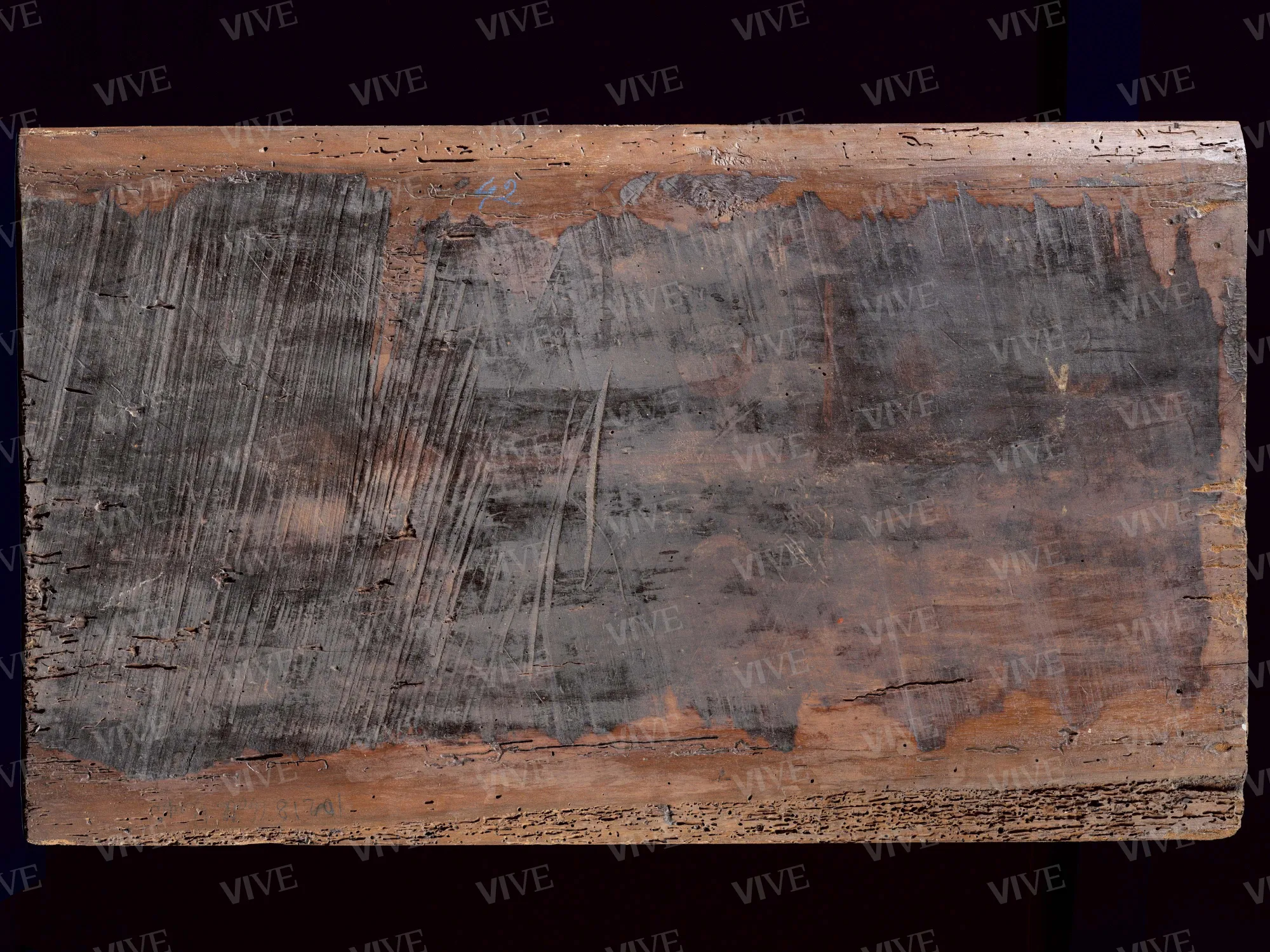Madonna and Child, St. Cosmas, St. Christopher, St. Damian
Cristoforo da Bologna Ca 1380–1390
Tempera painting on panel depicting Madonna and Child in the upper part and three saints within arches in the lower part. The saints are Cosmas and Damian at the either end and Christopher in the center. The panel appears to have been cropped on all four sides and has a conspicuous gap in the lower center.
Tempera painting on panel depicting Madonna and Child in the upper part and three saints within arches in the lower part. The saints are Cosmas and Damian at the either end and Christopher in the center. The panel appears to have been cropped on all four sides and has a conspicuous gap in the lower center.
Details of work
Catalog entry
The painting is divided into two sections. The upper section depicts a Madonna suckling the Child; the lower section, framed within small arches, depicts Saints Cosmas, Christopher, and Damian.
The Virgin is seated on a cushion set on the ground, thus belonging to the iconographic type of the Madonna of Humility. She is wearing a pink tunic and a dark blue cloak on which, on her right shoulder, a star is painted. The Child is snuggling into Mary’s lap while suckling as his mother looks tenderly on.
A beige curtain, entirely covered with a decorative pattern of crosses and stars stamped on it evenly without compromising the folds of the fabric, forms the background for the two figures. The same decorative motif is present in the red floor carpet on which the white cushion Mary is sitting on is placed.
Lower down are the three saints. The two doctor saints, the brothers Cosmas and Damian, are placed at either end and are both clutching the palm of martyrdom with their right hand and a jar of medicinal ointments with their left. Instead of old-fashioned garb, they are dressed in modern clothes—a dark tunic over which they wear a red cloak and a hat whose flaps cover their ears.
Saint Christopher, the giant saint, is depicted as he crosses the river. In his right hand he is holding a staff, on the upper end of which there is a palmette. With his left hand, he holds the infant Jesus seated on his shoulder.
Apart from a missing section at the level of the legs of Saint Christopher, the panel has been slightly cropped on all sides, as is obvious from the abbreviated legs of the three saints in the lower register and the upper part of Mary’s halo.
The painting has been attributed by art history scholars to Cristoforo da Bologna (Santangelo 1947, p. 37), and dated to between 1380 and 1390. It was exhibited at the prestigious 1950 exhibition of fourteenth-century Bologna painting curated by Roberto Longhi (Longhi 1950, pp. 19, 33).
Cristoforo di Jacopo, known as Cristoforo da Bologna, was active between the early 1460s and the first two decades of the fifteenth century. In 1410, he is recorded in the Matricola delle quattro arti, and the last document in which he is mentioned is dated 1422. This registered a payment for his work as “governor of the clock,” a position he held intermittently from 1365 to 1422. His father, also a painter, was Jacopo Benintendi, and the family tradition continued with Cristoforo’s son Niccolò (Pini 2005, pp. 54–55).
Vasari recalled the painter’s presence on the building site of the church of Sant’Apollonia in Mezzaratta. It was here that the artist debuted, together with painters of the second Vitale degli Equi generation who continued what degli Equi had started in the late 1940s in the same church. The other major worksite in which he was engaged was Santa Maria Egiziaca in San Giacomo in Bologna, while his later activity, where he mainly worked on panel paintings, denotes a certain weariness and stylistic monotony (Ferretti 1978, pp. 210–214; Gibbs 1989).
The painting was purchased by the lawyer Giulio Sterbini, a trusted man of Pope Leo XIII. The rich collection of medieval paintings—with a specific focus on those of the Byzantine area—was located in his palazzo on the Via Banco di Santo Spirito. It was then inherited by the Lupi family, and was later purchased by the banker Giovanni Armenise before being finally donated to the Italian state in 1940 (Pacia 1988).
Valentina Fraticelli
Entry published on 12 February 2025
State of conservation
Good. The panel has been slightly cropped on all sides, as is obvious from the cut of the legs of the three saints in the lower register and the upper part of Mary’s halo. There is also a conspicuous gap in the lower margin at the level of the legs of Saint Christopher.
Restorations and analyses
At the height of the cushion, on the right, there is a patch of dirt that suggests restoration work, which, however, cannot be dated with any precision.
Provenance
Rome, Palazzo Sterbini, Collezione Giulio Sterbini;
Rome, Collezione Lupi;
Rome, Collezione Giovanni Armenise;
Rome, Museo Nazionale del Palazzo di Venezia, 1940.
Exhibition history
Bologna, Pinacoteca Nazionale, Mostra della pittura bolognese del Trecento, May–July 1950.
References
Museo di Palazzo Venezia. Catalogo. 1. Dipinti, Santangelo Antonino (a cura di), Roma 1947, p. 37;
Longhi Roberto, Guida alla mostra della pittura bolognese del Trecento, Bologna 1950, pp. 19, 33, n. 90;
Ferretti Massimo, Cristoforo, in Arcangeli Francesco, Pittura bolognese del '300, Bologna 1978, pp. 210-214;
Pacia Amalia, La collezione Sterbini, in Soprintendenza ai Beni Artistici e Storici di Roma (a cura di), Museo Nazionale di Palazzo Venezia, Roma 1988, pp. 14-15;
Gibbs Robert, Cristoforo da Bologna, Jacopo di Biondo and the Mezzaratta frescoes in Bologna, in «The Burlington Magazine», vol. 131, luglio 1989, n. 1036, pp. 460-467;
Pini Raffaella, Il mondo dei pittori a Bologna 1348-1430, Bologna 2005.

